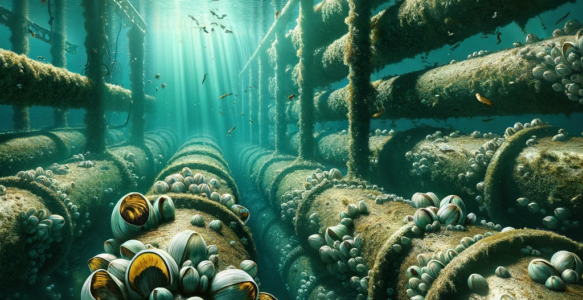Corrosion is a natural process that gradually wears away materials, especially metals, when they are exposed to the environment. This process is a significant issue for industries relying on metal structures, such as offshore platforms, ships, and pipelines, as it can lead to costly damages and repairs. Traditionally, to protect metals from corrosion, especially in harsh environments like seawater, special chemicals known as corrosion inhibitors are used. These substances form a protective layer on the metal surface, slowing down or preventing the corrosion process. However, many of these traditional inhibitors are made from synthetic chemicals that can be harmful to the environment and marine life.

In light of these environmental concerns, researchers have been searching for greener, more eco-friendly alternatives. A fascinating breakthrough in this area has come from studying the natural world, specifically barnacles. Barnacles are small sea creatures known for their strong adhesive properties, allowing them to attach firmly to various surfaces underwater, including metals. Scientists have discovered that the protein responsible for this strong adhesion in barnacles could be the key to a new, environmentally friendly corrosion inhibitor.
This groundbreaking research, led by a team of scientists including My Hanh Bui, Shu Hui Hiew, and others, focuses on a protein derived from the barnacle Megabalanus rosa. They’ve developed a recombinant version of this protein, named rMrCP20, which has shown remarkable abilities in protecting steel from corrosion in seawater-like conditions. The study’s results were published in the Communications Materials journal, highlighting how this barnacle-derived protein could revolutionize corrosion protection.

The secret to rMrCP20’s effectiveness lies in its biophysical properties. The protein has a strong affinity for metal surfaces, allowing it to form a stable, protective layer that significantly slows down the corrosion process. This layer works by both adhering tightly to the metal surface and capturing iron ions released from the steel, which are a key component in the corrosion process. By doing so, rMrCP20 prevents these ions from reacting with elements in the environment that would otherwise accelerate corrosion.

The way rMrCP20 helps stop corrosion is because it’s really sticky and can naturally grab onto loose iron particles.
This bio-inspired approach to combating corrosion not only offers a more sustainable alternative to synthetic inhibitors but also opens up new avenues for developing corrosion protection strategies. The use of rMrCP20 could lead to coatings and additives that are not only effective in harsh marine environments but also safe for the ecosystem. Moreover, the study sheds light on the molecular interactions between the protein and metal surfaces, providing valuable insights that could help in designing other bio-based corrosion inhibitors.
The researchers conducted a series of experiments to test the effectiveness of rMrCP20, including electrochemical studies, weight loss measurements, and advanced microscopy techniques. Their findings demonstrated a concentration-dependent corrosion inhibition, meaning the more protein used, the better the protection offered. This was observed across various tests, confirming rMrCP20’s potential as a powerful green alternative for corrosion protection.
In summary, this study represents a significant step forward in the quest for environmentally friendly corrosion inhibitors. By turning to nature and understanding how organisms like barnacles adhere to and protect surfaces underwater, scientists have unlocked a promising solution to a longstanding problem. The development of rMrCP20 as a corrosion inhibitor not only highlights the potential of bio-inspired materials in industrial applications but also paves the way for more sustainable practices in maintaining and protecting metal structures from the ravages of corrosion.
Further Study: Barnacle cement protein as an efficient bioinspired corrosion inhibitor | Communications Materials (nature.com)

